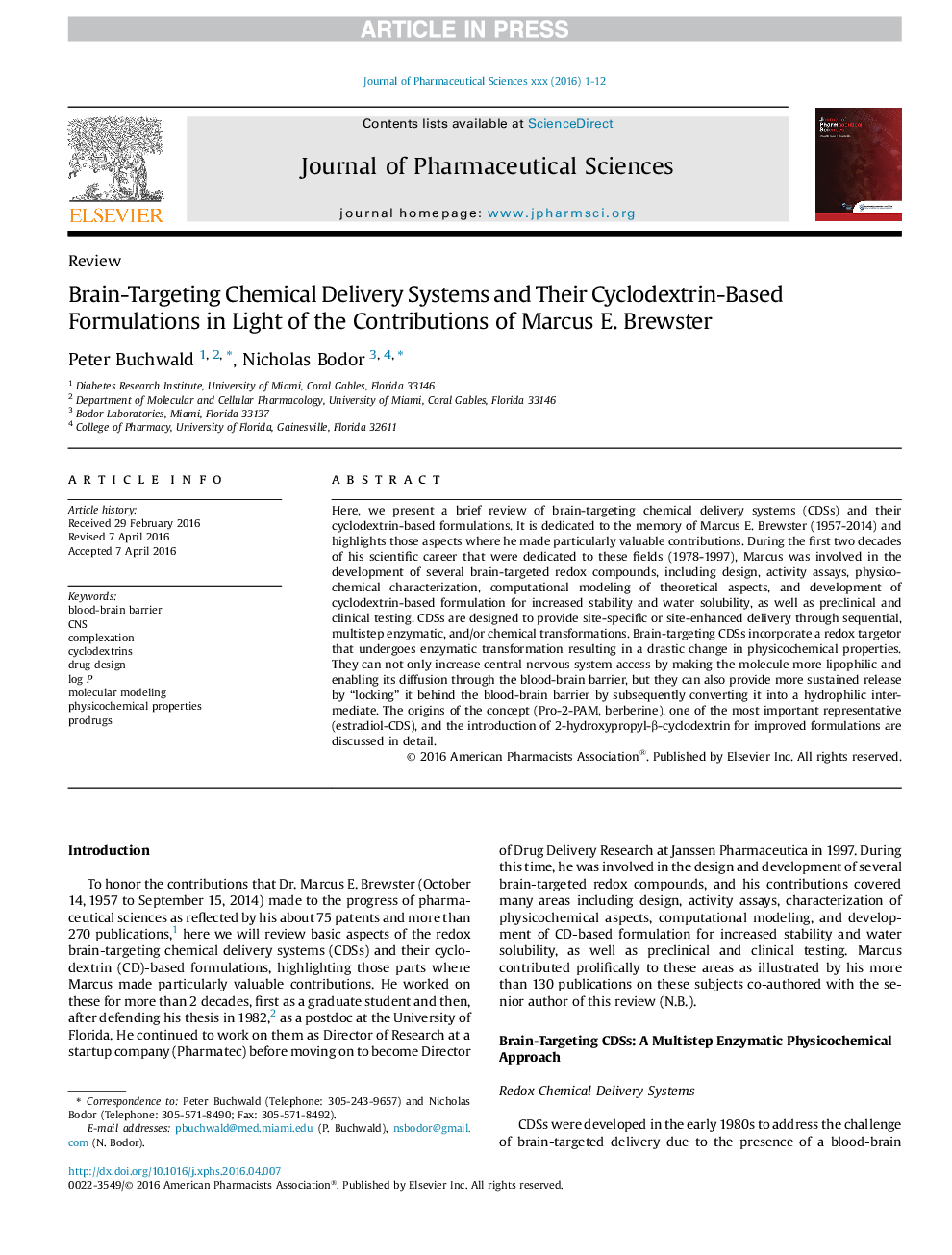| Article ID | Journal | Published Year | Pages | File Type |
|---|---|---|---|---|
| 8514880 | Journal of Pharmaceutical Sciences | 2016 | 12 Pages |
Abstract
Here, we present a brief review of brain-targeting chemical delivery systems (CDSs) and their cyclodextrin-based formulations. It is dedicated to the memory of Marcus E. Brewster (1957-2014) and highlights those aspects where he made particularly valuable contributions. During the first two decades of his scientific career that were dedicated to these fields (1978-1997), Marcus was involved in the development of several brain-targeted redox compounds, including design, activity assays, physicochemical characterization, computational modeling of theoretical aspects, and development of cyclodextrin-based formulation for increased stability and water solubility, as well as preclinical and clinical testing. CDSs are designed to provide site-specific or site-enhanced delivery through sequential, multistep enzymatic, and chemical transformations. Brain-targeting CDSs incorporate a redox targetor that undergoes enzymatic transformation resulting in a drastic change in physicochemical properties. They can not only increase central nervous system access by making the molecule more lipophilic and enabling its diffusion through the blood-brain barrier, but they can also provide more sustained release by “locking” it behind the blood-brain barrier by subsequently converting it into a hydrophilic intermediate. The origins of the concept (Pro-2-PAM, berberine), one of the most important representative (estradiol-CDS), and the introduction of 2-hydroxypropyl-β-cyclodextrin for improved formulations are discussed in detail.
Keywords
Related Topics
Health Sciences
Pharmacology, Toxicology and Pharmaceutical Science
Drug Discovery
Authors
Peter Buchwald, Nicholas Bodor,
